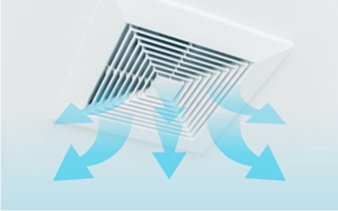 NATIONAL REPORT—Your lodging property might have a hidden energy thief that’s hurting your sustainability goals: your air ducts. Problems like leaks, poor insulation, or blockages can prevent air ducts from functioning as efficiently as they should. And the harder your HVAC system has to work to compensate, the more energy it consumes—increasing your carbon footprint as a result.
NATIONAL REPORT—Your lodging property might have a hidden energy thief that’s hurting your sustainability goals: your air ducts. Problems like leaks, poor insulation, or blockages can prevent air ducts from functioning as efficiently as they should. And the harder your HVAC system has to work to compensate, the more energy it consumes—increasing your carbon footprint as a result.
When air duct issues arise, many people notice higher energy bills but struggle to pinpoint the cause. This problem can persist for a long time. But when you’re familiar with the most common air duct problems that waste energy, how to spot them, and how to address them, you can stop them quickly and prevent them from draining resources further.
Leaky Ductwork Wastes Conditioned Air
Air leaks are among the most common culprits behind energy waste. When ducts develop cracks or loose connections, conditioned air escapes into unused spaces, such as attics or basements. Your HVAC system compensates by working harder to maintain comfortable temperatures.
You can spot leaky ducts by checking for inconsistent room temperatures or feeling for air movement around duct joints. High energy bills despite normal usage patterns also signal potential leaks.
Blocked Vents Strain Your System
Dust, debris, or furniture can block air vents and restrict airflow. When air can’t flow freely, your system struggles to distribute conditioned air throughout your property. This struggle forces the equipment to run longer cycles to reach the desired temperatures.
Look for vents covered by furniture or curtains and check for visible dust buildup around registers. Rooms that never seem to reach the right temperature often have blocked or restricted vents.
Poor Insulation Loses Temperature Control
Uninsulated or poorly insulated ducts lose heated or cooled air as it travels through unconditioned spaces. This temperature loss means your system must work harder to deliver air at the right temperature to each room.
Ducts that feel warm in summer or cool in winter indicate insulation problems. You might also notice that rooms farthest from your HVAC unit struggle to maintain comfortable temperatures.
Dirty Filters Create Airflow Problems
Clogged air filters force your system to work harder to pull air through the ducts. This increased resistance puts extra strain on your equipment and reduces overall efficiency. Dirty filters also allow dust and debris to accumulate in your ductwork.
Replace filters regularly and check for visible dirt or debris. If filters become dirty quickly after replacement, you might have excessive dust in your ductwork that needs professional attention.
How To Address These Problems
While you can handle some maintenance tasks like changing filters or moving furniture away from vents, most duct problems require professional attention. DIY repairs often miss underlying issues or fail to provide complete solutions.
When you hire professional HVAC repair services, you gain the assistance of a team equipped with specialized tools to locate leaks, assess insulation, and thoroughly clean the ductwork. They can also identify problems you might miss and provide comprehensive solutions that restore your system’s efficiency.
After a team comes out and repairs your system, consider setting up a commercial HVAC maintenance schedule if you don’t already have one to avoid future energy-draining issues.
Take Action to Stop Energy Waste
Energy loss in air duct systems contributes to unnecessary energy consumption and increased carbon emissions, but the good news is that most issues are fixable. By recognizing these common warning signs, you can address problems quickly and get your system back to peak efficiency.





